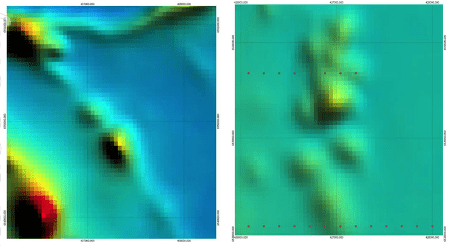Exciting regional developments buoy Impact’s WA projects

Pic: Bloomberg Creative / Bloomberg Creative Photos via Getty Images
Impact Minerals has announced some exciting developments in relation to its Western Australian suite of projects, prospective for nickel-copper-platinum group elements (PGE) and gold.
In WA, Impact (ASX:IPT) holds the Arkun-Beau nickel-copper-platinum group elements project along trend from Chalice Mining’s (ASX:CHN) exciting Julimar discovery.
The company also holds the Doonia gold project, 20km east of Lefroy Exploration’s (ASX:LEX) recent Burns discovery – a project with substantial parallels to Impact’s.
It’s hugely exciting land to hold, and IPT has today released an update on each highlighting recent developments of note.
Doonia
At Impact’s 80%-owned Doonia gold project, which sits 75km east of the St Ives gold centre, a number of significant developments have been made.
Chief among these is the signing of a Native Title agreement with the Ngadju People for the Doonia licence.
“Impact thanks the Ngadju People for the straightforward manner in which the agreement was reached, and the company looks forward to working with them,” IPT said in an ASX release.
Final grant of the tenement is due shortly.
Specific drill sites have now been identified at Doonia, and heritage surveys are currently being organised with a view to drilling in the second half of the year.
An interpretation of the surface geology and magnetic data over the project has also been completed.
Doonia was further enhanced by the recent discovery of significant gold-copper mineralisation hosted at the Burns project 20km to the west.
This project area was first identified in the same regional exploration program by WMC Resources which identified Doonia, and both areas were subject to broad-spaced aircore drilling.
Despite modest gold anomalism being returned in places, further work was not recommended – a call disproven by Lefroy’s work at Burns, which Impact said proved WMC’s drill spacing was inadequate for the project environment.
Doonia sits in a similar geological setting and hosts a similar-sized modest positive magnetic anomaly to Burns, where the magnetic response is at least in part directly associated with the magnetic alteration related to the copper-gold mineralisation.

The source of the magnetic anomaly at Doonia is to this point unknown.
Arkun-Beau
At the Arkun-Beau project, recent field checking and interpretation of magnetic data indicates mafic and ultramafic rocks are likely to be far more abundant than shown on regional geological maps.
Limited first pass rock chip samples have returned low-level PGEs in several places – a fact Impact said was very encouraging.
The company is currently carrying out interpretation work on bedrock geology to identify target areas for detailed follow-up work, and interpretation of the surface geology has indicated most the project is amenable to soil geochemistry – a factor which IPT says will help in the rapid identification of drill targets.
The Beau project tenement also recently granted and sits in close proximity to Arkun. This project offers a significant untested magnetic anomaly of size and shape similar to Chalice’s Gonneville intrusion and Mandrake Resources’ (ASX:MAN) Newleyine prospect.
Soil geochemistry work will commence in May at the wholly owned project.

Impact is also exploring the exciting Broken Hill nickel-copper-PGE project in New South Wales.
This article was developed in collaboration with Impact Minerals, a Stockhead advertiser at the time of publishing.
This article does not constitute financial product advice. You should consider obtaining independent advice before making any financial decisions.

UNLOCK INSIGHTS
Discover the untold stories of emerging ASX stocks.
Daily news and expert analysis, it's free to subscribe.
By proceeding, you confirm you understand that we handle personal information in accordance with our Privacy Policy.








